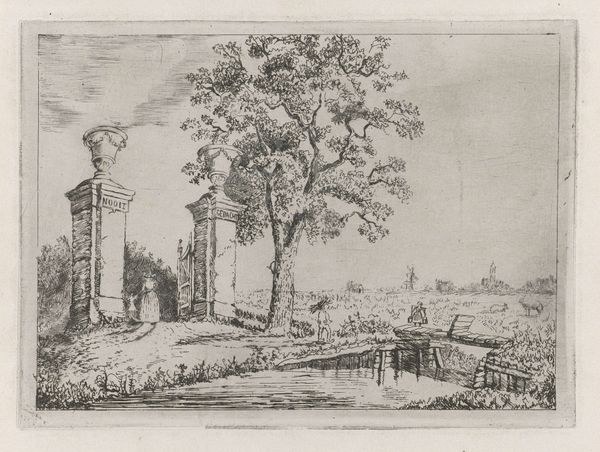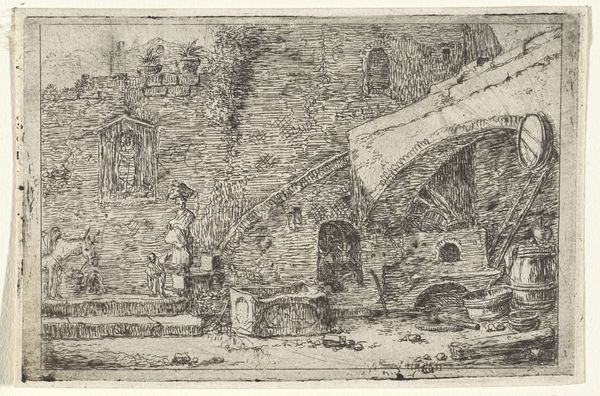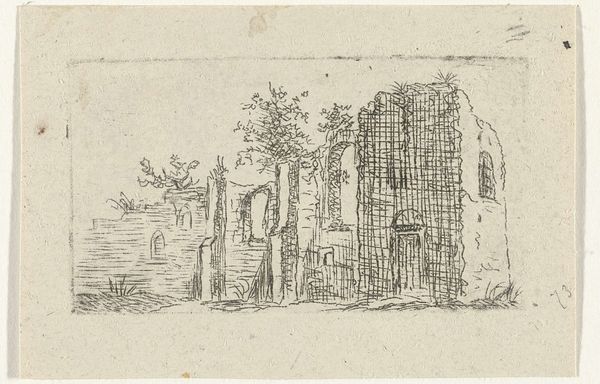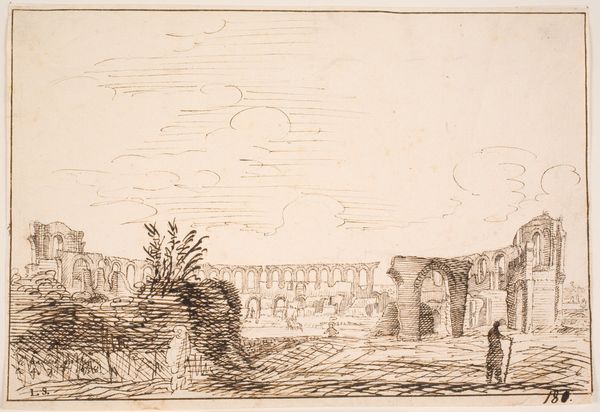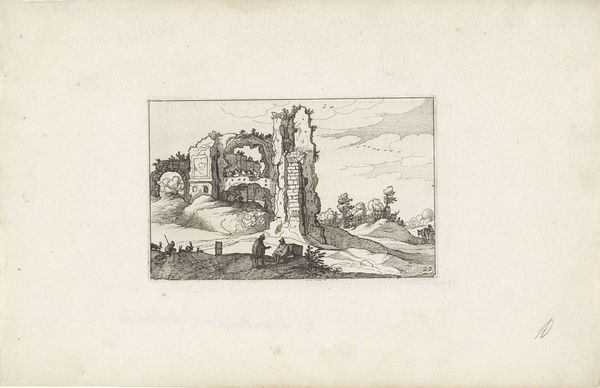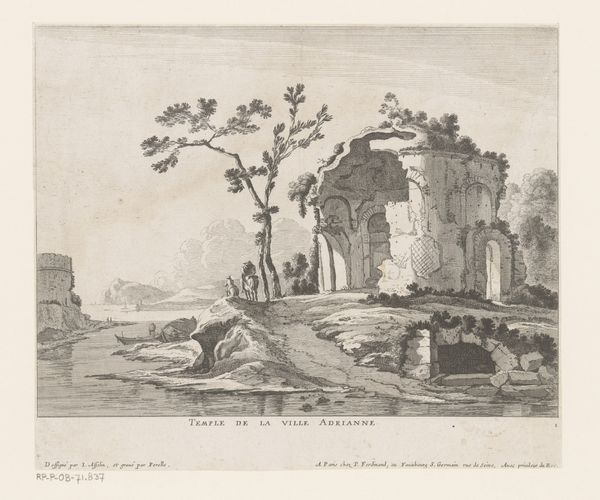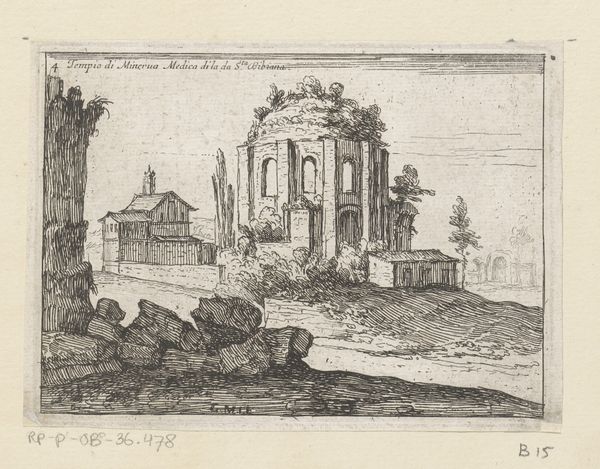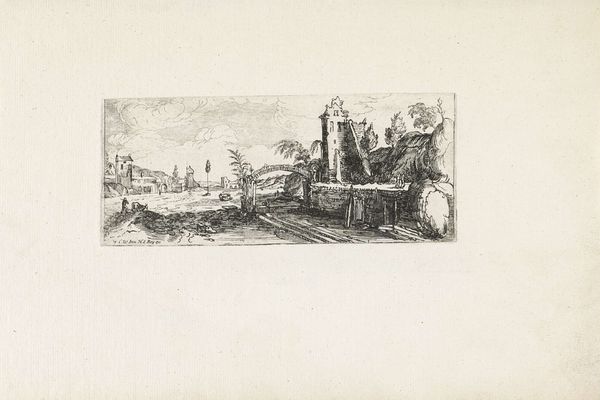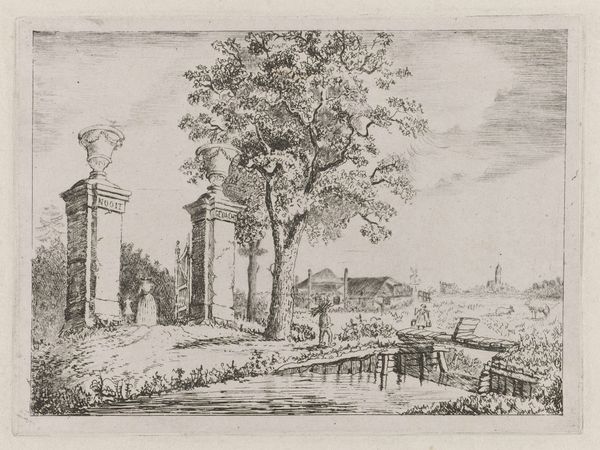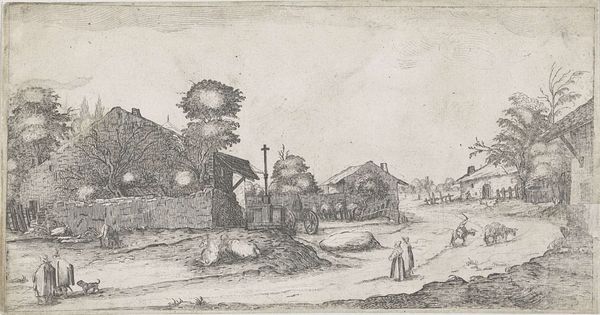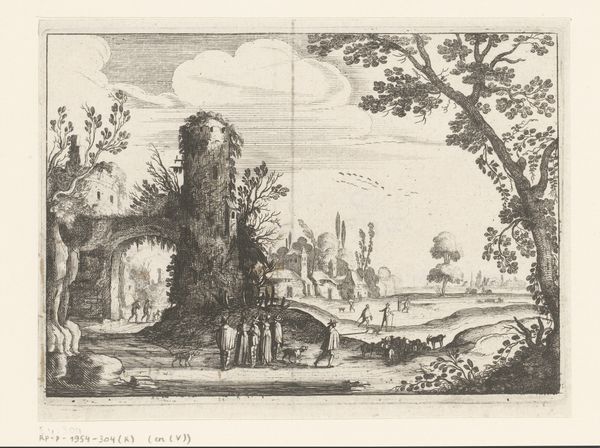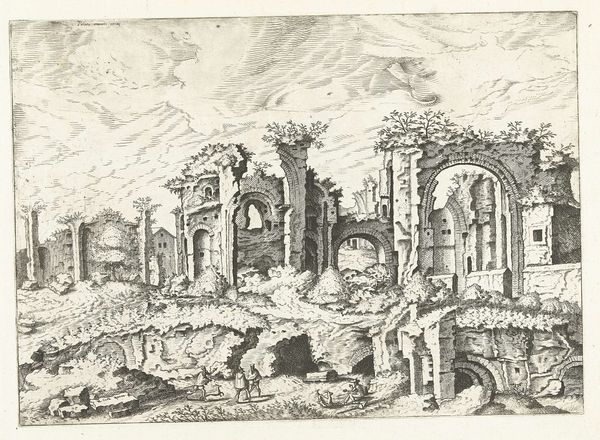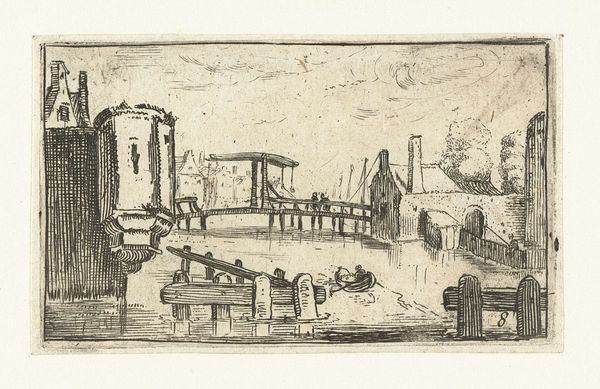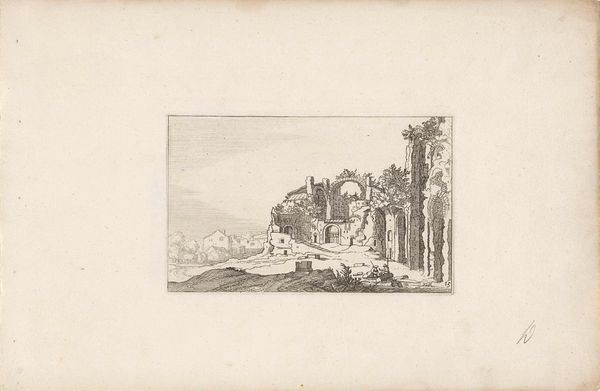
drawing, print, etching, ink
#
drawing
#
pen drawing
# print
#
etching
#
landscape
#
ink
#
ancient-mediterranean
Dimensions: height 58 mm, width 97 mm
Copyright: Rijks Museum: Open Domain
Editor: Here we have “Antique Ruins by a River,” dating from around 1610 to 1617, etching in ink on paper. The artist is anonymous and it's currently held in the Rijksmuseum collection. There's something so captivating in its precise lines. What do you see in this piece from a formal perspective? Curator: Primarily, I am struck by the linear articulation. Observe how the artist has meticulously built form through varied densities of line work. The hatching technique, particularly in rendering the reflections on the water, creates a compelling interplay between light and shadow. How does the composition direct your eye? Editor: I notice that my eye jumps between the structures on either side of the river; there is something drawing me back and forth, from left to right and back. It almost feels as though the artist composed it for an ongoing kind of inspection. Curator: Precisely. The deliberate placement of the ruins and the strong verticality of the bare tree on the right, act as compositional anchors. Furthermore, the reduction to a limited palette of blacks and whites encourages close attention to tonal variation, wouldn't you agree? This tonal range helps give form to otherwise unmodulated masses. Editor: I agree, and it encourages a kind of slowness, a deliberate seeing, since all of the drama is within the contrasts, and there is no colour to create contrast on its own. Looking at it like this, it’s a masterful rendering of form, primarily through these visual structures! Curator: Yes, it showcases how even with limited tonal range, form emerges through line, creating space through shadow, and directing vision using composition. This focused appreciation can transform how we view the history in it, understanding it more deeply through what it *is* as well as what it represents.
Comments
No comments
Be the first to comment and join the conversation on the ultimate creative platform.
